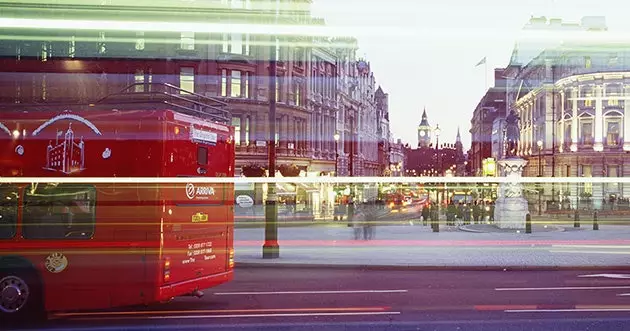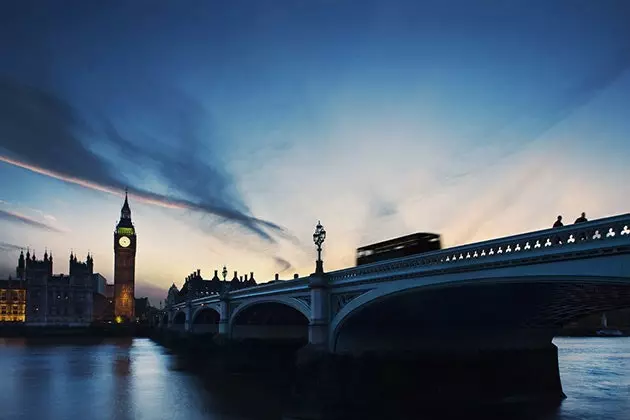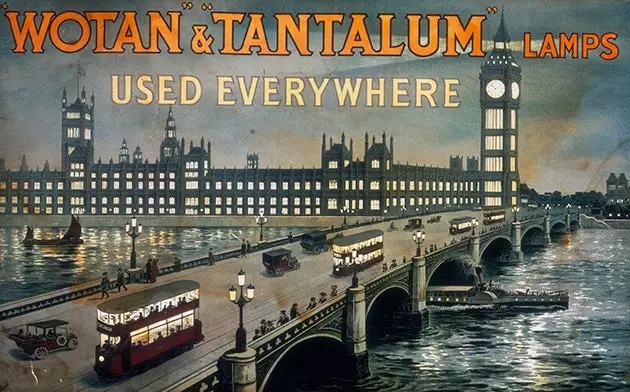
Ode to (London) buses
"The subway is dark, it's full of people, it smells funny and in summer it's very hot." I say it and say Andrew Brown and Charlie Stamp, who are London guides and fans of bus travel . Also some of the visitors who came to ask for information at the tourist office where they both work. “We have been serving tourists for years. They ask a lot of simple questions: where can I get money? Where is the bathroom? Is this a bathroom? One that was repeated was which non-tourist bus they could take to see 'everything'. Because some tourists want to go sightseeing without looking like tourists, without anyone knowing . Like 'secret tourists'”, they say.
From the love of both for overground transport, and given the covert need of the tourist who does not want to seem like it, ** Toursome was born: an application that suggests tours that are awesome (ehh) around the city**. All in public buses, cheaper, more sustainable and, in short, more authentic. The idea served as an excuse to make a bus route with them and mark, one after another, reasons to declare eternal love to this means of transport . That above in London, being so tall, it's cooler.
**1) YOU CAN DO TOURISM (IN SECRET) **
In almost every city there is a bus line that, until the journalists tell it, savvy locals know, the manual tourist does not know and from whose window you will see everything for which a travel agency charges 28 pounds. For a modest 91.4% less, in London take the number 15 . Although the tourists have already discovered it because the vehicle is a routemaster (see the second point), not usually too crowded . And in any case you save yourself the repetitive explanations of the guide and 26 pounds.
Line 15 starts in the east, but to see beautiful things, you can catch it at the Tower of London. Address Trafalgar Square, you will pass by St. Paul's Cathedral (“get off the bus and go see it NOW”, insist Brown and Stamp) and Piccadilly Circus . If you join with 38 and 148, you will make a London top ten that includes Hyde Park, Buckhingham Palace and the triad of Westminster Abbey, Houses of Parliament and Big Ben . From there, across the ubiquitous London Eye, hop on the RV1 along the South Bank of the Thames and back to the starting point at the Tower of London. Another line that does good is the 11, which starts at Liverpool Street station and goes through the gray City of London and other emblematic places until it reaches the posh streets of Chelsea.
Voila! Almost without leaving the bus you have seen everything "there is to see" in London, or the basic kit of the one-day tourist . The good thing is that if you go out you can go back up for the same price (see the fifth point).
2) YOU WILL FEEL LIKE A MR OR LADY
Lines 15 and 9 are heritage routes , not only because they go through what-must-see but because they recover the design of the routemasters, those buses that were accessed from the back. For a time they were out of circulation, but in a kind of nostalgic heat the government returned them to the streets. People like them a lot. "It's a bit strange. The windows are smaller so the views aren't as good, the seats aren't as comfortable and you can't even see yourself riding in them from the outside, no matter how iconic the design is." But the back is open, so you can walk up there, think you're in 1950s London and tag the photo you upload to Instagram as #vintage.
3) THEY ARE TO WASTE TIME
That maybe it's the last thing you need , because although you may have pretended to, you are not living in the 50s but in the 21st century, you have a lot of work to do, many emails to answer and your smartphone is burning with notifications... wait, are you sure that is the last thing you need? If there is one thing that fascinates me about buses, it is their ability to make the trip, as long as you find a seat, a downtime in which you can also read better than on the subway. "If you want to waste time, take line 23," recommends Brown . From the eastern gate of the city, Liverpool Street, to one of the westernmost points, Great West Road, the 23 also stops at Portobello Market if you don't feel like finishing it. But if you have a (good) book, you've won, because it eats up all the traffic jams.

A bus crosses a bridge over the Thames
4) THEY HAVE A VIEW
I could say this, finish the article, pass sentence. The double deckers of London buses are the only true crux of the matter . Although they have detractors because they are not exactly accessible, the mayor made them his banner during the last electoral campaign. He insisted that accordion buses, single-decker but as long as the ones we have in many Spanish cities, are dangerous for cyclists (another of his flags). By 2016 he promises to eliminate accordion buses and replace them all with the new bus for London, which has a design as well as rounded, as well as very Apple. The fact is that today most lines have two heights. With any luck you can sit upstairs and in the front, the perfect place to waste time - which is what we came here for - while enjoying beautiful views of the city.
Note: If you've been into London's booze culture before, be careful going down the stairs as the turns are not at all delicate. It is another reason why they have detractors.
5) THEY ARE CHEAPER
Not only the tourist bus (28 pounds against 2.40 for a single ticket), but the metro and its ticket at 4.50 pounds. If you're going to be in London for more than a day, get an Oyster Card and load it with £5. C **every time you get on the bus, 1.40 pounds (2.10 in the case of the metro) ** will be deducted until reaching 4.5 (7 in the case of the metro) . Thereafter, any bus that day is free. Both numbers are a bit dizzy. In general, the transport pricing system in London is a bit dizzy. But the fact is that 5 pounds of Oyster deposit + 5 surcharge + the freedom to get on, off, back on, back off and take as many buses as you want = the bills come out.
6) THEY DON'T MAKE MUCH SENSE
Nobody planned London. Neither do their buses. “The first buses were private lines. The first went from Paddington to Bank, simply because a lot of people who lived in Paddington worked in the City. Today it is difficult to explain where each bus goes, because it does not make much sense. There is no planning: now we will do 1, then 2, 3...”, recalls Brown.
Some tip not to get lost: maps, beautiful maps and maps on mobile . Citymapper is an app that tells you all the time which transport is best for you.
**7) THEY ARE RED (AND COMBINE WITH THE REST OF THE CITY) **
"My son, before all this was smoke" . Forget the beautiful images of streets shrouded in fog because they were not fog but pollution. People were dying to breathe and those who lived did not see beyond their steps. “The smoke from the coal was black and together with the humidity it created an impenetrable atmosphere. It was not seen. People remember him as evocative, but he was a killer! ”, Stamp and Brown recount. So much so that postmen could not find green mailboxes until 1874 when the Post Office came up with a more visible color: red. In 1912 that same post office took over the telephone booths, which they also dyed red. Years later Arsenal was born...
What does bacon have to do with speed or does all this have to do with buses? It is a question that the guides also ask themselves but that could have their one: after all, if london is of any color in the collective imagination , it's the red . In 1997, after its privatization via Thatcher, all buses became red by law. Was it because the Pantone 485 was already a kind of symbol of the city? "Actually, the corporate color of the company that operated most of the buses was that, so it was easier to paint the rest the same," they explain. "But maybe there was a little bit of that." So if you want to think that the English are so English that by law they took care of this detail, you can. If not, you will always have its utilitarianism, which is another thing that is not so bad either.
*** You may also be interested in...**
- The 100 things you should know about London - 25 things about London that you will only understand if you have lived there - Gastromorriña in London: survival guide - Guide to London
- All information about London

An old advertising poster with a typical London bus
